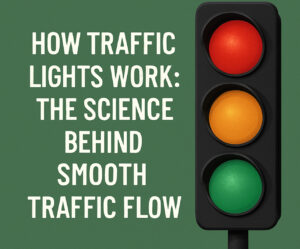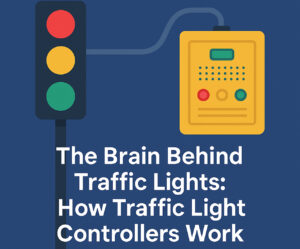The demand for modern traffic safety solutions has evolved significantly in recent years. Among these, drum barricades, barricades vertical panels drums and cones, and plastic traffic drum products have emerged as vital tools for ensuring road safety across diverse environments. In developing regions and emerging economies, especially in parts of Asia, Africa, and South America, the focus has shifted toward portable, weather-resistant, and durable materials. This shift is being led by traffic drums—specifically designed to withstand challenging climates and frequent relocations. Know more.
A Growing Global Demand
From large-scale highway projects to temporary detours in rural towns, drum barricades are essential. As urbanization and vehicle populations grow, governments and contractors are investing more heavily in durable, highly visible traffic control tools. The inclusion of barricades vertical panels drums and cones in road safety kits is not just a requirement—it’s now a standard. The global traffic drum market has experienced double-digit growth in the last five years and shows no signs of slowing.
In emerging markets like South Africa, India, and Vietnam, contractors have shifted from older wood or metal solutions to polymer-based plastic traffic drum alternatives. These new models are not only more visible and durable but also far easier to deploy, recover, and reuse.
Key Drivers of Growth
- Urban Expansion: Rapid urbanization in Asia and Africa fuels a growing need for better temporary traffic management. Projects in Johannesburg or Nairobi rely on drum barricades to ensure road worker safety and motorist guidance during infrastructure projects.
- Smart City Projects: Countries like China and the UAE are integrating traffic drums with sensors or RFID chips. While still in early adoption phases, such integrations help track the deployment and usage of plastic traffic drum systems.
- Regulatory Mandates: Government regulations increasingly mandate the use of certified and standardized equipment like barricades vertical panels drums and cones, particularly in hazardous zones, nighttime operations, and construction areas.
- Climate Resistance: Traditional metal or wooden barricades degrade in extreme weather. Polymer-based plastic traffic drum models resist UV rays, heavy rains, and dust.
- Reuse and Sustainability: Many countries are adopting green policies that encourage the use of recyclable and reusable safety gear. Drums made from recyclable plastic meet these goals while offering durability.
Regional Analysis
South Africa
South Africa has become a testing ground for low-cost, high-durability drum barricades. With frequent road maintenance needs in provinces like Gauteng and KwaZulu-Natal, municipalities favor solutions that are light enough to be transported in bakkies and strong enough to withstand truck gusts and seasonal rains.
India
India’s ongoing national highway expansion heavily utilizes barricades vertical panels drums and cones in high-density zones. Reusable plastic drums are a go-to for night work thanks to their reflective bands and the ability to mount solar-powered lights.
Brazil
In Brazil, safety regulations for construction zones have led to a 20% increase in the use of plastic traffic drum systems. These are favored over cone-only solutions due to their larger surface area and improved visibility.
Innovations in Design
Modern traffic drums are not just large plastic barrels with reflective tape. Manufacturers have adopted several innovations:
- Collapsible Bases: Easier storage and transport.
- Stackable Design: Allows dozens of plastic traffic drum units to fit into a small warehouse.
- Integrated Lighting: Solar-powered LED lights enhance visibility during the night.
- Sensor Embedding: Smart drum barricades now come with embedded sensors that send usage and status data to traffic management systems.
Integration with Smart Technologies
In smart cities, barricades vertical panels drums and cones are increasingly integrated with IoT technology. When paired with AI-powered traffic systems, these drums can help manage detours dynamically, rerouting traffic in real-time based on congestion or accident reports.
In Seoul and parts of Singapore, smart plastic traffic drum units now include QR codes for scanning, which updates traffic crews on placement and retrieval schedules. This reduces human error and enhances system efficiency.
Cost Trends and Market Forecast
The cost of traffic drums varies greatly by material, technology, and country of manufacture. Basic drum barricades may cost as little as $20 USD per unit, while smart, sensor-equipped drums can range upward of $100. In bulk procurement for national projects, governments often negotiate lower per-unit pricing.
According to industry forecasts, the market for plastic traffic drum units is expected to grow by 12.5% CAGR globally from 2024 to 2029. Growth is driven by:
- Increasing investments in road safety
- Demand for reusable, sustainable materials
- Expansion of road infrastructure in Africa and Southeast Asia
Challenges in Adoption
Despite the benefits, there are challenges to widespread adoption:
- Counterfeit Products: Low-quality knock-offs of barricades vertical panels drums and cones are flooding markets in some regions, leading to poor safety performance.
- Training Gaps: In rural zones, crews may not be trained to deploy or maintain smart drums properly.
- Cost Sensitivity: High-tech versions may be cost-prohibitive for smaller municipalities without federal support.
Environmental Impact
Plastic traffic drum production has raised environmental concerns. However, many manufacturers are shifting to recycled or biodegradable plastics. Some South African companies now produce drums made from upcycled industrial waste, reducing landfill overflow and aligning with the UN’s Sustainable Development Goals.
Additionally, reusability dramatically reduces overall waste. A well-made plastic traffic drum can last up to 7 years with proper maintenance.
Customization and Localization
One notable trend is the customization of drum barricades for local conditions. For example:
- In India, drums often come with bilingual labeling in English and Hindi.
- In South Africa, reflective striping is customized to meet SANS 613 safety standards.
- In Latin America, many barricades vertical panels drums and cones are painted in region-specific colors or symbols for local context.
These customizations ensure better compliance and make the products more intuitive for local populations.
Case Study: Johannesburg Infrastructure Project
In a 2023 project upgrading a 50km stretch of highway near Johannesburg, over 2,000 plastic traffic drum units were used. The project utilized GPS-tagged drums with LED lights, reducing labor and improving visibility. Officials reported a 35% reduction in work zone accidents compared to traditional cone-only setups.
Feedback from the crews included:
- “Easier to carry and stack.”
- “Takes less time to deploy than old barricades.”
- “LEDs helped prevent two near-misses during low-light conditions.”
This project has since influenced procurement policies in other provinces.
What to Look for When Buying
If you’re sourcing drum barricades or plastic traffic drum units, consider:
- Material: HDPE or impact-resistant polymers last longer.
- Visibility: Choose models with 360° reflectivity.
- Base Design: Weighted bases stay upright during windy conditions.
- Certifications: Ensure compliance with local or international road safety standards.
- Stackability: Saves space during transport and storage.
The Road Ahead
As urban centers expand and road networks grow more complex, the role of barricades vertical panels drums and cones will only increase. Expect to see more government tenders requiring smart and eco-friendly designs, along with rapid adoption in the private sector for everything from parking lots to public events.
Traffic drums are more than static objects; they’re becoming data points, safety tools, and even branding opportunities in high-traffic zones. Their role in global infrastructure development is just beginning to show its full potential.
Final Thoughts
Drum barricades, barricades vertical panels drums and cones, and plastic traffic drum products are no longer just stop-gap safety tools—they’re foundational elements of smart and sustainable traffic management systems. As the market evolves, expect broader adoption across continents, deeper tech integration, and a push toward environmentally sound materials.
For governments, planners, and safety officers worldwide, staying updated on traffic drum innovations is no longer optional—it’s essential for building safe, efficient, and resilient transportation networks.





